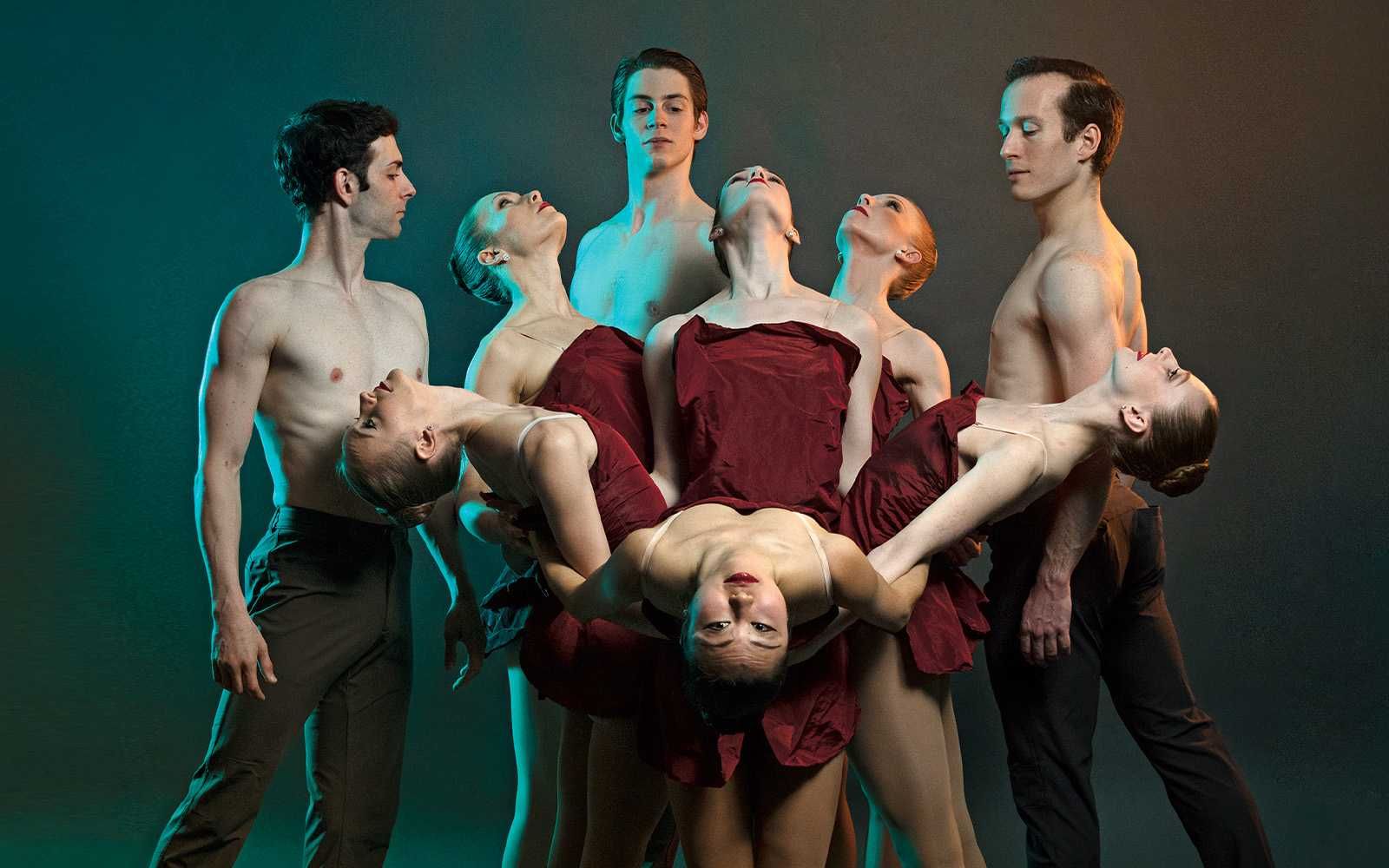With its annual Love Notes presentation, Fort Wayne Ballet is performing two pieces from an astonishing performance during last November’s Violins of Hope.
While interweaving heartbreaking stories from the Holocaust and featuring Philharmonic players on several of the actual Violins of Hope, the ballet served up powerful choreography, choreographed by Tracy Tritz.
Tritz, ballet mistress, director of outreach, and longtime faculty member at Fort Wayne Ballet, has had to make a few tweaks from that original performance. But she discovered that those changes have done nothing to diminish the power of the pieces.
Adjusted performance
“I knew going into it that I would have five couples this time instead of six,” Tritz said. “So I’m not going to be able to recreate that Star of David. But it’s still going to have that weightiness because it’s just so emotional. I really wanted to hold onto that heaviness, the weight of the loss and the grief.
“I knew when I was creating it that I wanted to put a lot of Jewishness in there, the religious beliefs, the faith. I wanted to show what it was like for people who were torn apart from the people they loved. What were they feeling when they knew it might be their last day, the last day you see the people that you love? You’d want to hold those people close until you couldn’t anymore. I wanted those themes of how families and relationships were torn apart.”
That piece, set to Barber’s “Adagio for Strings,” is a favorite of Tritz’s, a piece of music she said she’d long wanted to use. When she was given the task of choreographing two pieces for Violins of Hope, she knew the time was right.
One of the more powerful moments in the courthouse performance was when the six couples converged and the Star of David emerged, most overtly for those who observed the performance from one of the upper levels of the building.
Losing that effect is less problematic given the new space, and it was the change in venue that also required some changes to the choreography.
“My original goal was to create shapes and symbols,” Tritz said. “I’ve had to tweak some details not only because of the dancers but because there aren’t as many entrances and exits in the theater. It actually made it a little easier to keep the dancers on the stage all the time. So there were some adjustments.
“Sometimes it’s hard to make those adjustments, but this one wasn’t that difficult. In the courthouse you had the rotunda, and people were able to view it from all sides and from above, but the perspective will be different in this different space.”
Spirit of the show
The other piece Tritz choreographed for Violins of Hope was to Bach’s “Partita,” featuring Fort Wayne Philharmonic’s concertmaster Violetta Todorova on violin. Though many of the specifics are changing again for this performance — for example, Todorova will be playing her own violin rather than one of the Violins of Hope — Tritz again feels much of the spirit of this solo performance lingers.
“Being able to use ‘Adagio for Strings’ was very special to me, but this piece was also very important,” she said. “And it’s great to have Violetta coming back to perform it with us again. Having a live musician there is so important and makes the dancers feel so much more connected to the piece. I just want to bring back as much of the magic that we can from that night.”
Additional Aspects
Tritz’s two pieces from Violins of Hope are just part of what Fort Wayne Ballet has on hand for Love Notes. Also included in the performance will be a piece choreographed by Saki Morimoto, one of the ballet’s company dancers, as well as the Bridemaids’ Dance from Romeo & Juliet and two pieces — the women’s dance and the pas de deux — from the fall performance of “Italian Suite” choreographed by the late Gerald Arpino.
Use of pieces from Robert Joffrey and Arpino come thanks to the unique relationship Fort Wayne Ballet has established in the last decade with the Arpino Foundation. The ballet has also developed a special connection to New York’s American Ballet Theatre. ABT faculty member Raymond Lukens has been providing training to the FWB dancers and offered the ballet one of the pieces he choreographed for ABT, even visiting town recently to help the dancers prepare for its inclusion in Love Notes.
“Raymond gifted us his pas de deux from Valse Triste,” said Karen Gibbons-Brown, artistic director for Fort Wayne Ballet. “It’s a beautiful piece and ebbs and flows. He created it for major stars of American Ballet Theatre so it’s wonderful for our dancers to feel that legacy.”
Gibbons-Brown is also staging a piece for the performance, a pas de deux from La Carnaval.
“It’s a piece you don’t see very often,” Gibbons-Brown said. “And we’re doing it the way it was originally choreographed. I think people will really love the pieces we’re staging for this performance. Saki’s piece will have a lot of sass in it and will be very athletic. There is really something for everyone in this show.”
 Submit Your Event
Submit Your Event
